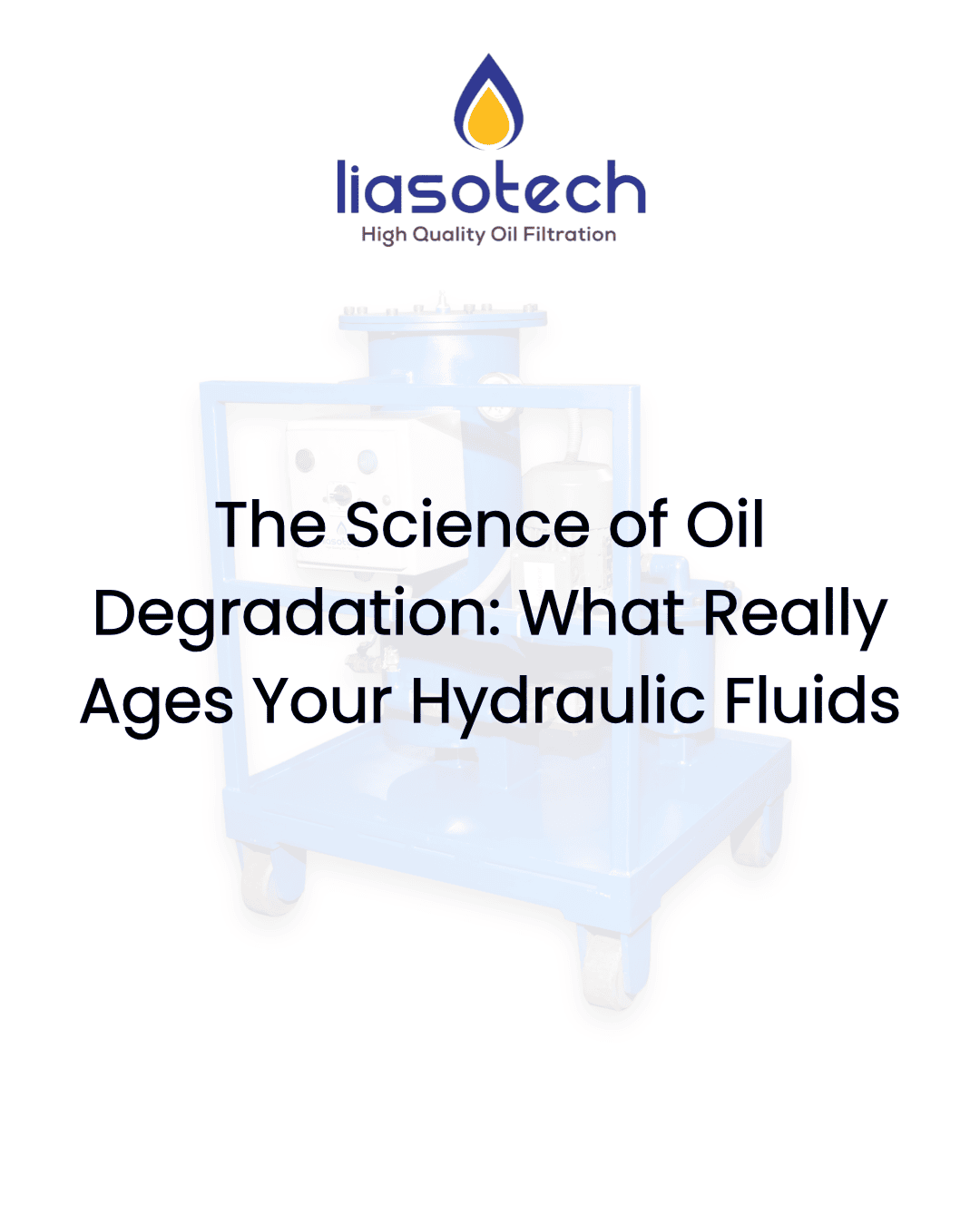
Introduction
1. What Is Oil Degradation?
Oil degradation refers to the chemical and physical breakdown of hydraulic fluids over time. When exposed to stress, temperature, and contaminants, the oil’s base stock and additives begin to deteriorate — leading to loss of lubrication, increased wear, and eventual system failure.
Common signs of oil degradation include:
Darkening of oil color
Formation of sludge or varnish
Increased viscosity
Foul or burnt odor
Rising particle or moisture levels
Each symptom signals that the oil has lost its protective and functional properties.
2. The Main Causes of Hydraulic Oil Degradation
A. Oxidation — The Chemical Aging Process
B. Thermal Stress and Overheating
C. Moisture Contamination
D. Particle Contamination
3. The Additive Depletion Problem
4. How to Slow Down Oil Degradation
Maintain Cleanliness Standards:
Adopt offline oil filtration systems capable of achieving NAS 5 or ISO 14/12/09 cleanliness levels.
Eliminate Moisture Early:
Install Vacuum Dehydrator units to control both free and dissolved water content.
Regular Oil Sampling:
Conduct oil analysis for TAN (Total Acid Number), viscosity, and particle count.
Replace Filters Proactively:
Don’t wait for clogging — replace elements based on contamination load, not just time.
5. The Long-Term Payoff of Clean Oil
When hydraulic fluids remain clean and stable, the results ripple across the entire operation:
Longer equipment lifespan
Reduced energy losses
Lower maintenance costs
Extended oil change intervals
Increased machine reliability
In industries like steel, cement, and power generation, this translates to measurable uptime and sustainability gains.
Conclusion
Oil degradation is inevitable but preventable.By understanding the science behind fluid aging, and implementing advanced oil filtration systems, industries can protect their equipment, extend fluid life, and maintain consistent performance.
